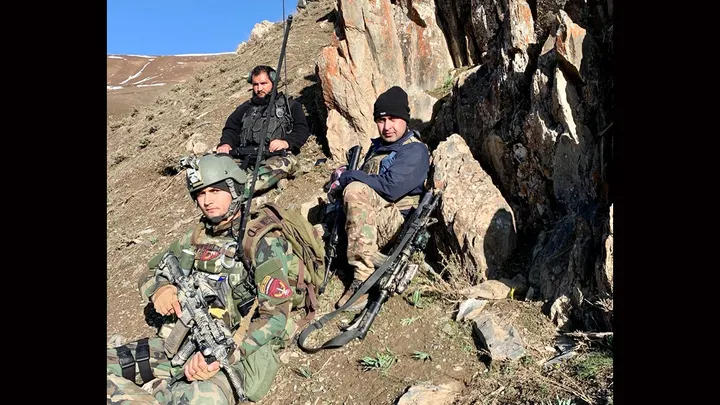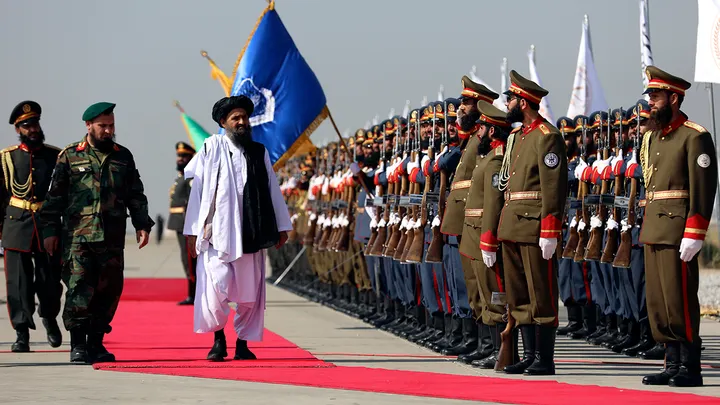Three years have passed since the United States withdrew its forces from Afghanistan, ending its two-decade-long involvement in what came to be known as the global war on terrorism. The war cost the lives of more than 6,200 American soldiers and contractors, more than 1,100 allied troops, 70,000 Afghan military and police personnel, and more than 46,300 Afghan civilians. Yet, despite the heavy cost, Afghanistan has once again become a “hotbed of terrorism,” a frightening term used by former Afghan Lieutenant General Sami Sadat to describe the current state of the country.

Sadat, a former high-ranking officer who served for nearly two decades in the Afghan military, argues that the Taliban’s control over Afghanistan has led to the resurgence of terrorist groups such as al-Qaeda. In a recent interview, Sadat emphasized that the situation is far worse than many people understand. Despite US claims that al-Qaeda is no longer a major threat, Sadat suggests the opposite is true. “There are 50,000 al-Qaeda members and al-Qaeda affiliates in Afghanistan,” he said, adding that many are training for overseas operations since the US military withdrawal.

Afghanistan’s new reality: Terrorism resurgence under Taliban rule
Since the Taliban retook Afghanistan in August 2021, the country has experienced a rapid deterioration in its security environment. Al-Qaeda, which was considered significantly weakened after the 9/11 attacks and the US invasion, has regrouped and built a new stronghold in Afghanistan. Sadat’s claim that al-Qaeda now operates at least a dozen training camps in Afghanistan coincides with reports that suggest the group is growing stronger and more organized than it was before 9/11.

The withdrawal of American and allied forces provided al-Qaeda with an opportunity to reestablish itself, and Afghanistan quickly became its most important hub. Allowing the Taliban to retake Afghanistan provided al-Qaeda with a powerful rallying call, Sadat writes in his recently published book “The Last Commander: The Once and Future Battle for Afghanistan.” He argues that the group has not only survived but also adapted to the changing geopolitical landscape while the U.S. and its allies were distracted by other global conflicts, waiting for the right time to reemerge.
A New Era of Terrorism: The Role of State Sponsors
One notable difference between the al-Qaeda of the late 1990s and today’s iteration is its new nation-state support. While the 9/11 Commission reported there was no solid evidence of al-Qaeda receiving direct funding from foreign governments before the attacks in 2001, recent developments paint a different picture. According to Sadat and other intelligence experts, countries like Iran have played a key role in sheltering and supporting terrorist organizations, including al-Qaeda and the Taliban. Former US Secretary of State Mike Pompeo revealed in a January 2021 speech that “al-Qaeda has a new haven: it is the Islamic Republic of Iran.” The assassination of al-Qaeda leader Abu Muhammad al-Masri in Tehran bolstered this claim. Al-Masri’s presence in Iran raised questions about the relationship between the Sunni terrorist organization and the Shia-dominated nation, which have historically been opposed to each other. However, this new alliance reflects a pragmatic shift in strategy. Both groups have a common enemy: the United States and its Western allies.

Reports also suggest that Iran has been aiding the Taliban for years, providing arms and financial support to fight US forces and their Afghan allies. This cooperation has grown even more since the US exit from Afghanistan, with meetings reportedly taking place between high-level officials from Iran, al-Qaeda and the Taliban to discuss strategies for future operations.
Global implications of the resurgence of terrorist activities in Afghanistan
The implications of the resurgence of terrorist activities in Afghanistan under Taliban rule extend far beyond its borders. The country has once again become a training ground for terrorists who could target Western countries. While US intelligence agencies have assessed that al-Qaeda does not currently have the capability to launch long-range attacks, Saadat and other security experts disagree, arguing that the group’s intent and capability should not be underestimated.

An important change in the post-US withdrawal era is closer cooperation between various extremist groups in the Middle East. Saadat points to an evolving alliance between Shia and Sunni factions, such as the ceasefire between Houthi rebels and Sunni al-Qaeda militants in Yemen. This alliance enables these groups to share resources, intelligence and fighters to achieve their common goals, primarily targeting the US and its allies.
